May 13, 2024
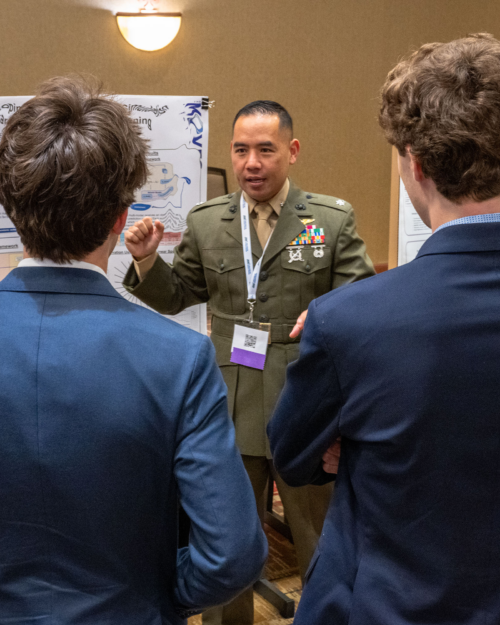
The 62nd National Junior Science and Humanities Symposium (NJSHS), celebrated in Albuquerque from May 1-4, brought together 241 high school students from across the country, Puerto Rico, and DoDEA-supported schools worldwide to present their original scientific research. Teachers, mentors, university faculty, military personnel, DoD STEM professionals, and others serving as judges, mentors, and regional representatives were all in attendance.
During the National JSHS, poster and oral finalists presented their research to a panel of judges from the U.S. Office of the Secretary of Defense and the U.S. Departments of the Army, Navy, and Air Force, who are STEM professionals and experts in their field.
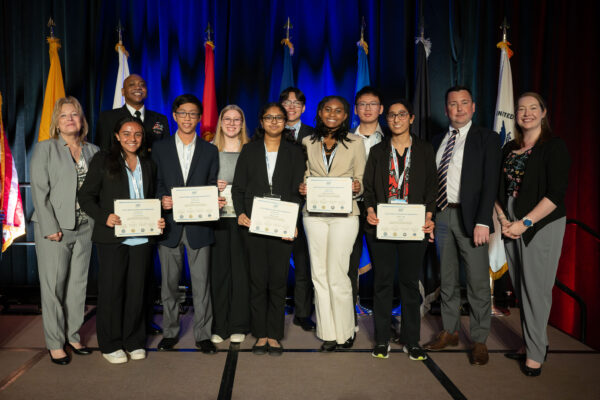 This year’s finalists exceeded expectations. Their original research projects explored a wide range of topics, from cutting-edge advancements in medical and health sciences to addressing pressing environmental challenges. They dedicated countless hours to their projects, conducting experiments, analyzing data, and pushing the boundaries of knowledge in their respective fields. Their dedication and commitment are inspiring, and their innovative research projects will contribute to future scientific knowledge across various fields.
This year’s finalists exceeded expectations. Their original research projects explored a wide range of topics, from cutting-edge advancements in medical and health sciences to addressing pressing environmental challenges. They dedicated countless hours to their projects, conducting experiments, analyzing data, and pushing the boundaries of knowledge in their respective fields. Their dedication and commitment are inspiring, and their innovative research projects will contribute to future scientific knowledge across various fields.
“These brilliant high school students are truly in a league of their own, and we are continually in awe of the level of research that they conduct,” says Andrea Malenya, JSHS Project Manager. “We are proud to provide them with the opportunity to showcase their world-changing STEM research and support them with scholarships and awards as they continue to break barriers throughout their education and careers.”
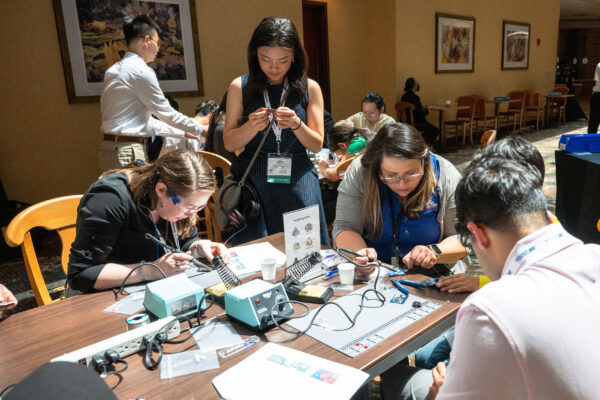 Throughout the symposium’s four days, students not only presented their research but also had the opportunity to engage in various networking events and connect with professional researchers and DoD STEM professionals. These interactions provided invaluable insights into potential career pathways and exposed students to current research projects in their fields of interest. Additionally, participants participated in hands-on activities alongside members of the Air Force Research Laboratory during a “makerspace” session. The symposium also featured a career and research showcase, allowing students to explore different opportunities and gain inspiration for their future endeavors.
Throughout the symposium’s four days, students not only presented their research but also had the opportunity to engage in various networking events and connect with professional researchers and DoD STEM professionals. These interactions provided invaluable insights into potential career pathways and exposed students to current research projects in their fields of interest. Additionally, participants participated in hands-on activities alongside members of the Air Force Research Laboratory during a “makerspace” session. The symposium also featured a career and research showcase, allowing students to explore different opportunities and gain inspiration for their future endeavors.
The 62nd National Junior Science and Humanities Symposium is a testament to the talent and dedication of young scientists across the nation. The innovative research presented by students not only demonstrates their commitment to academic and professional goals but also reflects their proactive approach to addressing real-life challenges and contributing to solutions.
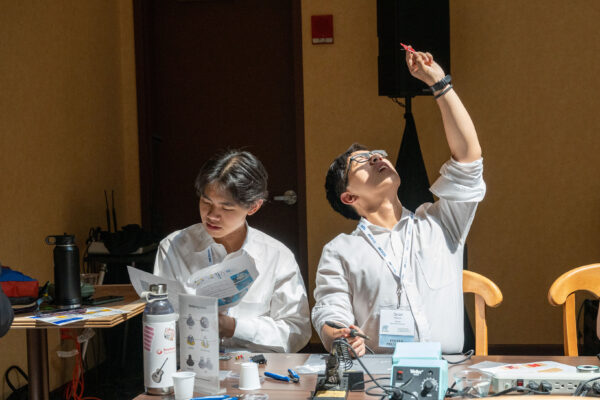 Congratulations to all of our national finalists and the 2024 winners! Find the press release, here, and the full list of winners, below.
Congratulations to all of our national finalists and the 2024 winners! Find the press release, here, and the full list of winners, below.
Registration for next year’s Junior Science and Humanities Symposium opens in the fall. Learn more at www.jshs.org.
About JSHS
The Junior Science and Humanities Symposium (JSHS) is a Department of Defense sponsored STEM program (U.S. Office of the Secretary of Defense and U.S. Departments of the Army, Navy, and Air Force) that encourages high school students to conduct original research in STEM fields. In cooperation with higher education, program sponsors include the Office of the Assistant Secretary of the Army (Acquisition, Logistics & Technology); Naval STEM Coordination Office operating out of the Office of Naval Research, Arlington, VA; and Air Force Office of Scientific Research, Washington, DC. JSHS is administered by the National Science Teachers Association, the largest professional organization in the world promoting science teaching and learning for all. For more information, please visit www.jshs.org.
1st Place Oral Presentations: earning $12,000 scholarships
Environmental Science
Aditya Sengupta, Washington, The Overlake School
LeAF: Leveraging Convolutional Neural Networks for Plant Anomaly Detection and Classification for Farmers with Large Language Models for Natural Language Interaction
Biomedical Sciences
Saathvik Kannan, Missouri, David H. Hickman High School
Revolutionizing Cancer Drug Discovery with DrugGen: Identifying a Novel Drug for DNA polymerase θ
Life and Behavioral Sciences
Faith You, Intermountain, Hellgate High School
microRNAs in Action: Regulation of Feeding Behavior
Medicine and Health
Joseph Yu, New England Southern, Massachusetts Academy of Math and Science
Using Immune Footprints in a Novel Deep Learning Model to Detect Human Diseases
Engineering and Technology
Shrihan Ganesh Babu, South Carolina, Spring Valley High School
Reducing Tracheal Complications in Endotracheal Intubation Patients Using Automated Cuff Pressure Modulation
Math and Computer Science
Om Shah, Washington, Lakeside School
Serum Bilirubin Prediction for Neonates using Segmentation-Guided Neural Networks
Physical Sciences
Emily Alemán, Puerto Rico, CROEC
Discovery of New Extragalactic Planet Candidates: A Novel End-to-end Machine Learning Pipeline for Efficient Transit Detection in the X-ray Spectrum
Chemistry
Calvin Mathew, Florida, American Heritage Broward
3D Printing Personalized Knee Implants: Novel Computational Geometric Models for Stem Cell Regeneration in Meniscus Tears
2nd Place Oral Presentations: earning $8,000 scholarships
Environmental Science
Neel Ahuja, New Jersey Northern, Millburn High School
Reducing Per-and Polyfluoroalkyl Substances (PFAS) Water Contamination With Mycorrhizal Hydroponics Plants
Biomedical Sciences
Amara Martin, Hawaii & Pacific, Kamehameha Schools Kapālama
Using Aspirin to Mitigate Renal Toxicity of Lithium for Bipolar Disorder Using HEK293 Cells
Life and Behavioral Sciences
Ashu Anand, Alabama, Alabama School of Fine Arts
The Effects of Electrical Stimulation on Planaria Tissue Regeneration
Medicine and Health
Jingjing Liang, California Northern, The Harker School
SEL Fusion System: Multisource Digital Biometrics and Stimuli for Early ASD Screening
Engineering and Technology
Luc Nguyen, Georgia, Gwinnett School of Mathematics, Science, and Technology
Low-Cost, Adjustable, Pediatric Prosthetic Leg
Math and Computer Science
Antonia Kolb, Connecticut, King School
DETICKT IT: A Machine Learning-Based Application for Real-Time Tick Identification and Spatiotemporal Disease Risk Assessment
Physical Sciences
Cayden Shen, New York – Long Island, Roslyn High School
Using an Inexpensive Night Vision Camera as a Detector in NIR Spectroscopy
Chemistry
Aarush Tutiki, Southwest, Albuquerque Academy
A Two-Pronged Method for the Identification of Highly Biocompatible Nanomaterials
3rd Place Oral Presentations: earning $4,000 scholarships
Environmental Science
Prisha Bhat, Texas, Plano East Senior High School
Aqua-Arsenic Remediation
Biomedical Sciences
Yifan Ding, New England Southern, Boston Latin School
Engineering a Termination Readthrough-Based Gene Switch Enables Controllable CRISPR Gene Editing
Life and Behavioral Sciences
Camille Coffey, Maryland, Baltimore Polytechnic Institute
Exploring Lipoprotein De-fish-encies As A Result of Genetic Mutations
Medicine and Health
Edmund Tsou, New York – Upstate, Briarcliff High School
Language Models as Catalysts in EEG-Based BCI Speller Systems: A Low-Cost Solution for Paralyzed Patients
Engineering and Technology
Shloka Shriram, New Jersey Southern, Princeton High School
Novel Quantum Materials for Low Power Electronics
Math and Computer Science
Yunjia Quan, North Carolina, Charlotte Country Day School
Enhancing Ethereum’s Security with LUMEN, Novel Zero-Knowledge Algorithms Generating Transparent and Efficient SNARKs Based on Hidden Order Groups
Physical Sciences
Lauren Shen, West Virginia, Morgantown High School
Two-Step X-Ray Transit Identification: Bayesian Block Simplification and Sequential Machine Learning Techniques
Chemistry
Yiwen Wang, Alabama, Northridge High School
Producing Sustainable, Cost-Effective Aluminum-Sulfur Batteries Through a Triple-Function Cathode Design and Anion Charge Carriers
1st Place Poster Presentations
Environmental Science
Lydia Evans, New York – Metro, The Packer Collegiate Institute
Biomedical Sciences
Lucy Teng, Kentucky, duPont Manual High School
Life and Behavioral Sciences
Reyhan Haider, Virtual, Freedom High School
Medicine and Health
Siddhartha Milkuri, Arkansas, Bentonville High School
Engineering and Technology
Samhita Pokkunuri, New Jersey Northern, Old Bridge High School
Math and Computer Science
Ryan Cho, Illinois, Illinois Mathematics and Science Academy
Physical Sciences
Aditi Muduganti, Wisconsin/Upper Peninsula Michigan, Onalaska High School
Chemistry
Alexander Zhang, Wyoming and Colorado, Fairview High School
2nd Place Poster Presentations
Environmental Science
Anika Hooda, North Central, Brookings High School
Biomedical Sciences
Katherine Chen, New York – Upstate, Hackley School
Life and Behavioral Sciences
Arisha Sultana, Louisiana, Caddo Parish Magnet High School
Medicine and Health
James Xiao, Pennsylvania, North Allegheny Intermediate High School
Engineering and Technology
Karthik Muthukkumar, Maryland, Urbana High School
Math and Computer Science
Tessla Chan, New York – Long Island, Roslyn High School
Physical Sciences
Padmalakshmi Ramesh, Wyoming and Colorado, Laramie High School
Chemistry
Mairin Castellano, Wisconsin/Upper Peninsula Michigan, University School of Milwaukee
3rd Place Poster Presentations
Environmental Science
Maya Abdelaal, New Jersey Southern, Marine Academy of Technology and Environmental Science (MATES)
Biomedical Sciences
Collin Chan, Tennessee, University School of Nashville
Life and Behavioral Sciences
Quinn Hughes, North Central, Minnetonka High School
Medicine and Health
Divya Ariyur, Indiana, Carmel High School
Engineering and Technology
Max Kopp, Philadelphia and Delaware, Germantown Academy
Math and Computer Science
Sydney Bostic, West Virginia, Spring Mills High School
Physical Sciences
Jerry Wang, Pennsylvania, Parkland High School
Chemistry
Avani Kaur, Virginia, Mills E. Godwin High School
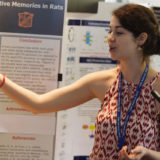
Junior Science and Humanities Symposium (JSHS)
At Junior Science and Humanities Symposium (JSHS), high school students compete for scholarships and recognition by presenting results of their STEM projects to a panel of judges.
More About Junior Science and Humanities Symposium (JSHS)Find a Volunteering Opportunity
Visit our Program Volunteers page for a tool to find the best opportunity for you.
eCYBERMISSION Mini-Grant
The eCYBERMISSION Mini-Grant is intended to support teachers/program leaders as they implement eCYBERMISSION with their teams. Educators (formal and informal) of students in grades 6-9 are encouraged to apply.
